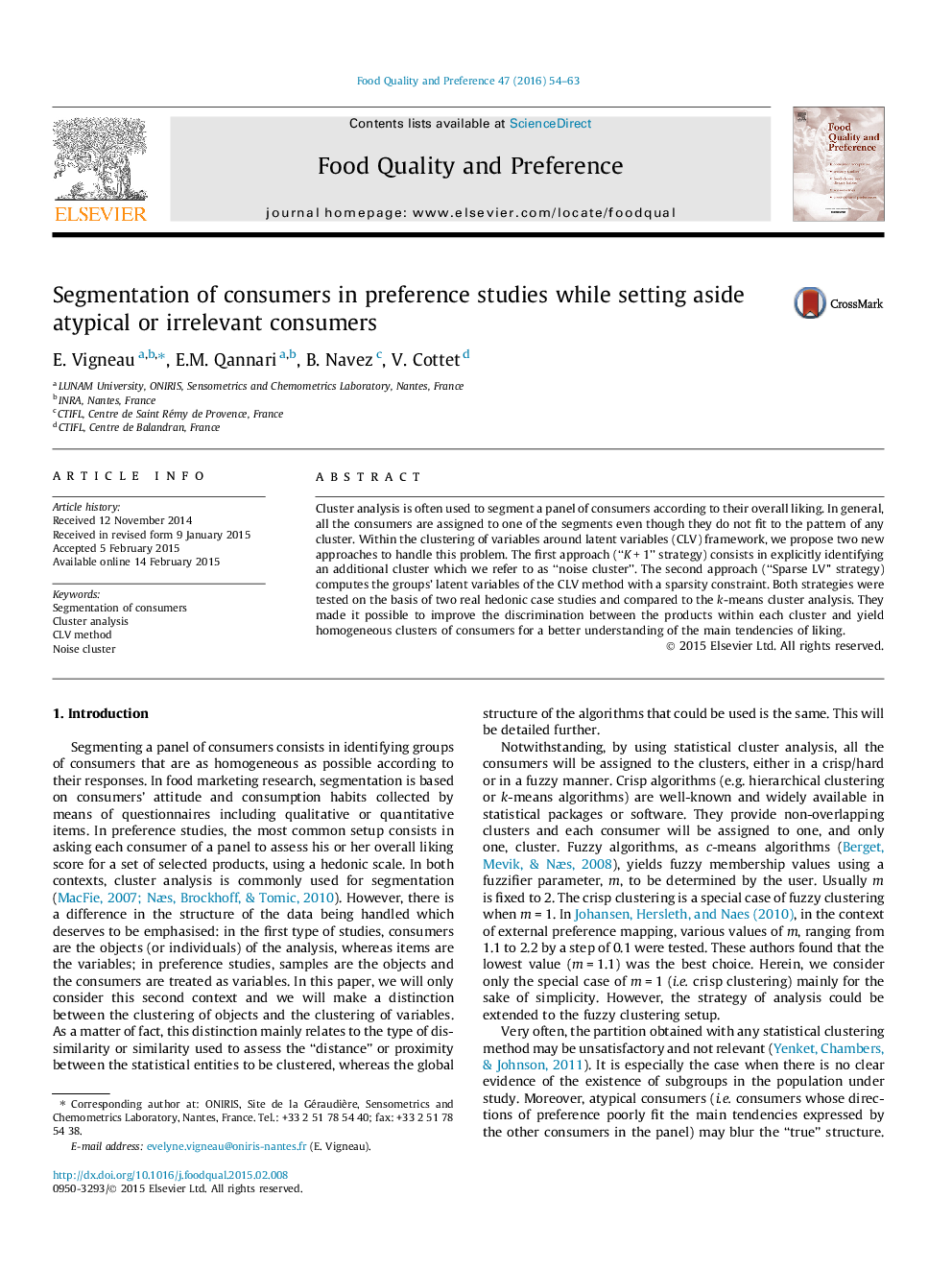| کد مقاله | کد نشریه | سال انتشار | مقاله انگلیسی | نسخه تمام متن |
|---|---|---|---|---|
| 6261403 | 1290573 | 2016 | 10 صفحه PDF | دانلود رایگان |
- Cluster analysis is used for segmenting consumers in preference studies.
- A large and heterogeneous cluster may be observed with k-means cluster analysis.
- CLV method provides more interpretable and homogeneous clusters.
- “KÂ +Â 1” and “Sparse LV” strategies with CLV lead to improved solutions.
- The “noise cluster” makes it possible to set aside atypical consumers.
Cluster analysis is often used to segment a panel of consumers according to their overall liking. In general, all the consumers are assigned to one of the segments even though they do not fit to the pattern of any cluster. Within the clustering of variables around latent variables (CLV) framework, we propose two new approaches to handle this problem. The first approach (“KÂ +Â 1” strategy) consists in explicitly identifying an additional cluster which we refer to as “noise cluster”. The second approach (“Sparse LV” strategy) computes the groups' latent variables of the CLV method with a sparsity constraint. Both strategies were tested on the basis of two real hedonic case studies and compared to the k-means cluster analysis. They made it possible to improve the discrimination between the products within each cluster and yield homogeneous clusters of consumers for a better understanding of the main tendencies of liking.
Journal: Food Quality and Preference - Volume 47, Part A, January 2016, Pages 54-63
